-
 Bitcoin
Bitcoin $106,754.6083
1.33% -
 Ethereum
Ethereum $2,625.8249
3.80% -
 Tether USDt
Tether USDt $1.0001
-0.03% -
 XRP
XRP $2.1891
1.67% -
 BNB
BNB $654.5220
0.66% -
 Solana
Solana $156.9428
7.28% -
 USDC
USDC $0.9998
0.00% -
 Dogecoin
Dogecoin $0.1780
1.14% -
 TRON
TRON $0.2706
-0.16% -
 Cardano
Cardano $0.6470
2.77% -
 Hyperliquid
Hyperliquid $44.6467
10.24% -
 Sui
Sui $3.1128
3.86% -
 Bitcoin Cash
Bitcoin Cash $455.7646
3.00% -
 Chainlink
Chainlink $13.6858
4.08% -
 UNUS SED LEO
UNUS SED LEO $9.2682
0.21% -
 Avalanche
Avalanche $19.7433
3.79% -
 Stellar
Stellar $0.2616
1.64% -
 Toncoin
Toncoin $3.0222
2.19% -
 Shiba Inu
Shiba Inu $0.0...01220
1.49% -
 Hedera
Hedera $0.1580
2.75% -
 Litecoin
Litecoin $87.4964
2.29% -
 Polkadot
Polkadot $3.8958
3.05% -
 Ethena USDe
Ethena USDe $1.0000
-0.04% -
 Monero
Monero $317.2263
0.26% -
 Bitget Token
Bitget Token $4.5985
1.68% -
 Dai
Dai $0.9999
0.00% -
 Pepe
Pepe $0.0...01140
2.44% -
 Uniswap
Uniswap $7.6065
5.29% -
 Pi
Pi $0.6042
-2.00% -
 Aave
Aave $289.6343
6.02%
10-day line support is effective: a confirmation sign of the end of adjustment?
The 10-day moving average acts as key support in crypto trading, signaling potential trend reversals when prices consistently bounce off the level with strong volume and bullish patterns.
Jun 16, 2025 at 04:50 am
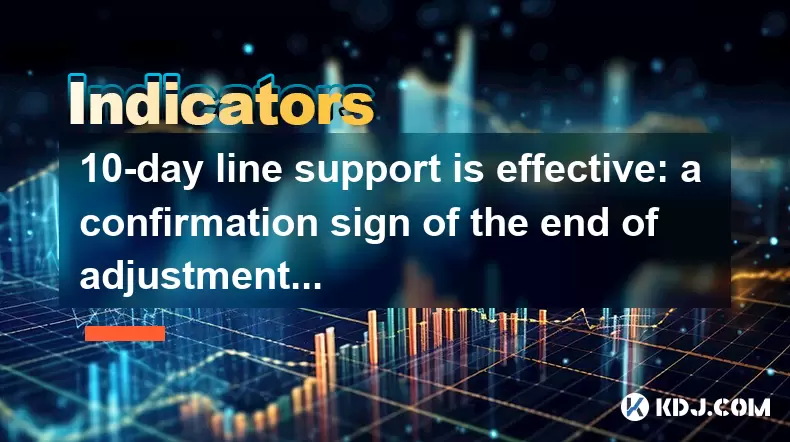
Understanding the 10-Day Line in Cryptocurrency Trading
The 10-day moving average (MA) is a commonly used technical indicator among traders, especially in volatile markets like cryptocurrency. It calculates the average price of an asset over the past 10 days and updates daily. When prices hover around or bounce off this line, it often signals strong support. Traders monitor how assets react to this level because consistent rebounds can suggest that the downtrend or consolidation phase might be ending.
In crypto trading, where market sentiment can shift rapidly due to news or macroeconomic factors, the 10-day MA becomes a crucial reference point for short-term trend analysis. If a digital asset repeatedly finds support at this level without breaking below it significantly, it may indicate underlying buying pressure and potential bullish momentum forming.
Important:
The effectiveness of the 10-day line as support should always be analyzed alongside volume and other indicators like RSI or MACD to avoid false signals.How to Confirm Support from the 10-Day Moving Average
To determine whether the 10-day line is acting as genuine support, traders should follow these key steps:
- Observe multiple touches: If the price touches the 10-day MA several times within a short period and bounces upward each time, it reinforces the strength of the support.
- Check for volume confirmation: A bounce with higher-than-average volume indicates stronger conviction from buyers, increasing the likelihood that the support is valid.
- Analyze candlestick patterns: Bullish reversal patterns like hammer candles or engulfing patterns near the 10-day line enhance confidence in the support level.
- Use additional indicators: Tools such as the Relative Strength Index (RSI) or Stochastic oscillator can help confirm oversold conditions during dips, reinforcing that a reversal is plausible.
These checks ensure traders don’t misinterpret temporary bounces as sustainable support. False breakouts are common in crypto, so confirming through multiple lenses is essential.
Identifying End of Adjustment Phases
An adjustment phase in cryptocurrency typically refers to a period where the price consolidates or corrects after a significant move up or down. These phases are often marked by sideways movement or minor pullbacks before resuming the previous trend.
When the price holds above the 10-day moving average during such a phase, it suggests that buyers are still active and that the uptrend may not have ended. Conversely, if the price breaks decisively below the 10-day line and stays there, it could signal a deeper correction or even a trend reversal.
Traders should watch for:
- Consistent closes above the 10-day MA: Daily closing prices staying above this line reinforce the idea that the adjustment is ending.
- Increased buying pressure post-support test: After touching the 10-day line, if the price surges upward quickly, it’s a sign that bulls are regaining control.
- Volume expansion on the rebound: A sharp increase in volume when the price bounces off the 10-day MA adds credibility to the end of the adjustment phase.
These signs help traders differentiate between a healthy consolidation and a bearish breakdown.
Combining the 10-Day Line with Other Technical Tools
Using the 10-day moving average in isolation can lead to misleading conclusions. Therefore, combining it with other tools improves accuracy. Here’s how:
- Pair with the 50-day MA: When the 10-day crosses above the 50-day MA, it creates a "golden cross," which is considered a strong bullish signal.
- Overlay Bollinger Bands: Observing whether the price is bouncing off the middle band (which is often the 20-day MA) or the 10-day MA helps understand volatility compression and potential breakout scenarios.
- Monitor Fibonacci retracement levels: If the 10-day line aligns with a key retracement level (like 38.2% or 50%), it strengthens its significance as a support zone.
- Integrate RSI divergence: If RSI makes higher lows while the price tests the 10-day line, it hints at hidden bullish momentum building beneath the surface.
By layering multiple tools, traders gain a more robust view of whether the 10-day line is truly functioning as support and whether the adjustment phase has likely concluded.
Practical Steps to Trade Based on 10-Day Line Support Confirmation
For traders looking to act on confirmed 10-day line support, here's a detailed guide on how to proceed:
- Mark the 10-day MA on your chart: Use platforms like TradingView or Binance’s native tools to plot the 10-day simple moving average (SMA).
- Wait for a touch or bounce: Look for the price to approach or briefly dip below the line before recovering. Avoid entering too early.
- Confirm with volume: Ensure that the bounce coincides with increased volume compared to the prior few days. This confirms participation from institutional or large players.
- Set entry points: Consider entering a long position once the price closes above the 10-day MA following a successful test. Some traders prefer waiting for the next candle to close above for added confirmation.
- Determine stop-loss placement: Place a stop-loss just below the recent swing low or slightly under the 10-day MA to limit downside risk.
- Target realistic take-profit zones: These can be based on previous resistance levels, Fibonacci extensions, or using a trailing stop to maximize gains as the trend continues.
This structured approach ensures disciplined trading and reduces emotional decision-making, which is vital in fast-moving crypto markets.
Frequently Asked Questions
Q: Can the 10-day moving average work effectively on all cryptocurrencies?
A: While the 10-day MA is widely applicable, its reliability varies depending on the liquidity and volatility of the specific cryptocurrency. Major coins like Bitcoin and Ethereum tend to respect technical levels more than smaller altcoins.
Q: Should I use the exponential moving average (EMA) or simple moving average (SMA) for the 10-day line?
A: Both are useful. The EMA gives more weight to recent prices, making it more responsive to new trends, whereas the SMA provides smoother, lagging signals. Many traders combine both for better insight.
Q: What if the price keeps hovering around the 10-day line without a clear direction?
A: That usually signals indecision in the market. Traders should wait for a breakout or breakdown beyond the consolidation range before taking action.
Q: How often should I re-calculate or update the 10-day line?
A: Most charting platforms automatically update the 10-day MA in real-time. There’s no need for manual recalculations unless you’re working with custom data or offline charts.
Disclaimer:info@kdj.com
The information provided is not trading advice. kdj.com does not assume any responsibility for any investments made based on the information provided in this article. Cryptocurrencies are highly volatile and it is highly recommended that you invest with caution after thorough research!
If you believe that the content used on this website infringes your copyright, please contact us immediately (info@kdj.com) and we will delete it promptly.
- 2025-W Uncirculated American Gold Eagle and Dr. Vera Rubin Quarter Mark New Products
- 2025-06-13 06:25:13
- Ruvi AI (RVU) Leverages Blockchain and Artificial Intelligence to Disrupt Marketing, Entertainment, and Finance
- 2025-06-13 07:05:12
- H100 Group AB Raises 101 Million SEK (Approximately $10.6 Million) to Bolster Bitcoin Reserves
- 2025-06-13 06:25:13
- Galaxy Digital CEO Mike Novogratz Says Bitcoin Will Replace Gold and Go to $1,000,000
- 2025-06-13 06:45:13
- Trust Wallet Token (TWT) Price Drops 5.7% as RWA Integration Plans Ignite Excitement
- 2025-06-13 06:45:13
- Ethereum (ETH) Is in the Second Phase of a Three-Stage Market Cycle
- 2025-06-13 07:25:13
Related knowledge
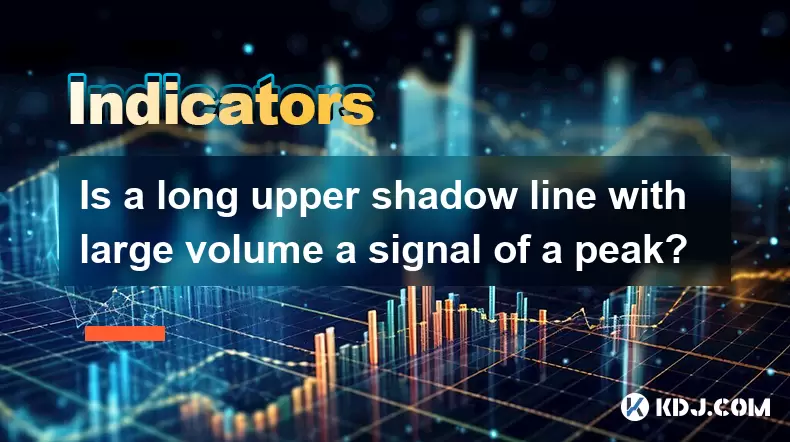
Is a long upper shadow line with large volume a signal of a peak?
Jun 17,2025 at 05:07am
Understanding the Long Upper Shadow LineA long upper shadow line, often referred to as a shooting star or inverted hammer depending on its location in a chart, is a candlestick pattern that indicates potential reversal from an uptrend. This pattern forms when prices rise significantly during the trading period but then fall back to close near the openin...

How to confirm the effectiveness of the average price line support in the time-sharing chart?
Jun 17,2025 at 12:56am
Understanding the Time-Sharing Chart and Its RelevanceIn cryptocurrency trading, time-sharing charts play a crucial role in analyzing short-term price movements. These charts typically display price fluctuations over a specific period, often ranging from minutes to hours. Traders rely on them to make quick decisions based on real-time data. The average ...
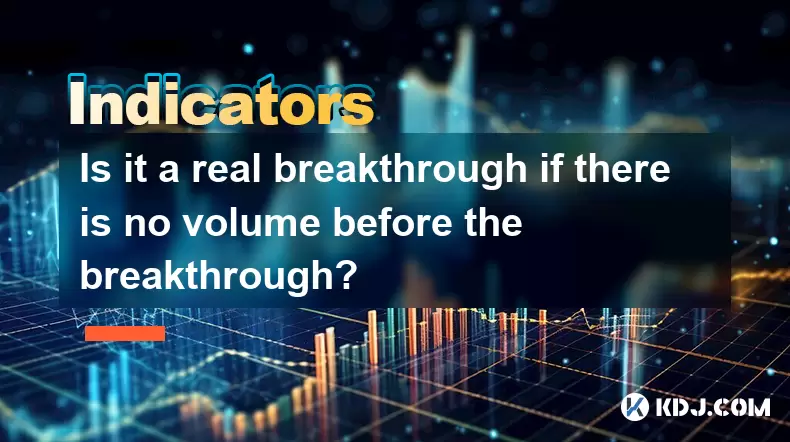
Is it a real breakthrough if there is no volume before the breakthrough?
Jun 17,2025 at 08:03am
Understanding the Concept of a Breakthrough in Cryptocurrency TradingIn cryptocurrency trading, a breakthrough typically refers to a price movement that surpasses a key resistance or support level. Traders often look for such events as potential signals for trend continuation or reversal. However, a crucial factor that determines the strength and reliab...

What does it mean when the momentum indicator breaks above the zero axis?
Jun 17,2025 at 12:43am
Understanding the Momentum IndicatorThe momentum indicator is a technical analysis tool used to measure the speed or velocity of price movements in cryptocurrency markets. It helps traders identify potential trend reversals, overbought or oversold conditions, and confirms existing trends. The indicator typically oscillates around a zero line, with value...
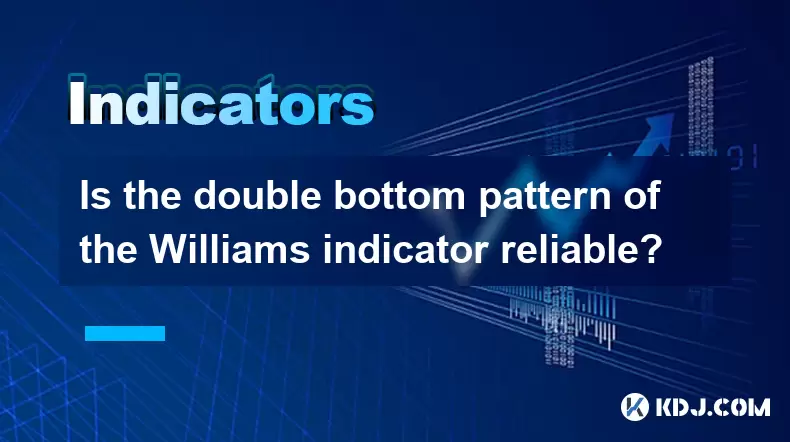
Is the double bottom pattern of the Williams indicator reliable?
Jun 17,2025 at 03:56am
Understanding the Williams Indicator and Its SignificanceThe Williams %R indicator, often referred to as Williams Percent Range, is a momentum oscillator used in technical analysis to identify overbought or oversold conditions in the market. Developed by Larry Williams, this indicator fluctuates between 0 and -100, with readings above -20 indicating ove...
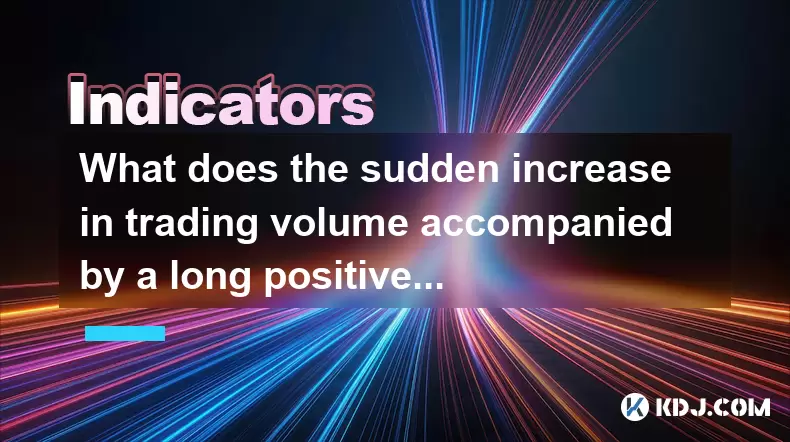
What does the sudden increase in trading volume accompanied by a long positive line mean?
Jun 17,2025 at 06:01am
Understanding the Sudden Surge in Trading VolumeWhen traders observe a sudden increase in trading volume, it typically signals a significant shift in market sentiment. This surge often indicates that more participants are entering or exiting positions, which could be due to news events, macroeconomic data releases, or institutional activity. High tradin...

Is a long upper shadow line with large volume a signal of a peak?
Jun 17,2025 at 05:07am
Understanding the Long Upper Shadow LineA long upper shadow line, often referred to as a shooting star or inverted hammer depending on its location in a chart, is a candlestick pattern that indicates potential reversal from an uptrend. This pattern forms when prices rise significantly during the trading period but then fall back to close near the openin...

How to confirm the effectiveness of the average price line support in the time-sharing chart?
Jun 17,2025 at 12:56am
Understanding the Time-Sharing Chart and Its RelevanceIn cryptocurrency trading, time-sharing charts play a crucial role in analyzing short-term price movements. These charts typically display price fluctuations over a specific period, often ranging from minutes to hours. Traders rely on them to make quick decisions based on real-time data. The average ...

Is it a real breakthrough if there is no volume before the breakthrough?
Jun 17,2025 at 08:03am
Understanding the Concept of a Breakthrough in Cryptocurrency TradingIn cryptocurrency trading, a breakthrough typically refers to a price movement that surpasses a key resistance or support level. Traders often look for such events as potential signals for trend continuation or reversal. However, a crucial factor that determines the strength and reliab...

What does it mean when the momentum indicator breaks above the zero axis?
Jun 17,2025 at 12:43am
Understanding the Momentum IndicatorThe momentum indicator is a technical analysis tool used to measure the speed or velocity of price movements in cryptocurrency markets. It helps traders identify potential trend reversals, overbought or oversold conditions, and confirms existing trends. The indicator typically oscillates around a zero line, with value...

Is the double bottom pattern of the Williams indicator reliable?
Jun 17,2025 at 03:56am
Understanding the Williams Indicator and Its SignificanceThe Williams %R indicator, often referred to as Williams Percent Range, is a momentum oscillator used in technical analysis to identify overbought or oversold conditions in the market. Developed by Larry Williams, this indicator fluctuates between 0 and -100, with readings above -20 indicating ove...

What does the sudden increase in trading volume accompanied by a long positive line mean?
Jun 17,2025 at 06:01am
Understanding the Sudden Surge in Trading VolumeWhen traders observe a sudden increase in trading volume, it typically signals a significant shift in market sentiment. This surge often indicates that more participants are entering or exiting positions, which could be due to news events, macroeconomic data releases, or institutional activity. High tradin...
See all articles

























































































